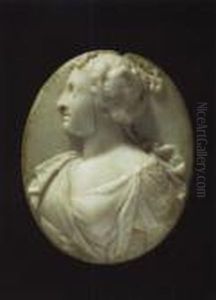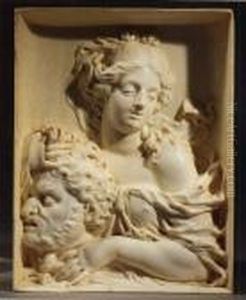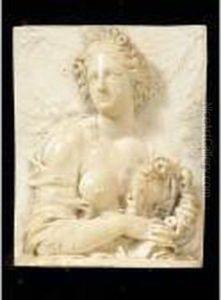Francis Van Bossuit Paintings
Francis Van Bossuit, born in 1635 in Brussels, was a Flemish sculptor whose work played a significant role in the transition from Baroque to Rococo styles. Not widely known outside specialized art circles, his contributions to European sculpture, particularly in ivory, have nonetheless been influential. Van Bossuit's life and career were marked by an extensive period of travel, study, and work across Europe, which greatly influenced his artistic development.
After initial training in his homeland, Van Bossuit moved to Amsterdam, where he became involved with a community of artists and patrons that appreciated his unique talents, especially in the realm of small-scale sculptures. However, it was his time in Italy, particularly in Rome, that profoundly shaped his artistic vision. There, he immersed himself in the study of classical antiquity and the Renaissance masters, which informed his approach to sculpture, blending classical themes with the dynamism of the Baroque.
Van Bossuit's work is characterized by its intricate details, dynamic compositions, and the sensual treatment of surfaces, all of which would come to influence the emerging Rococo style. His ivory carvings, in particular, are celebrated for their technical virtuosity and expressiveness, depicting religious scenes, mythological subjects, and everyday life with equal finesse. Despite the small size of these works, they are imbued with a sense of grandeur and emotional depth that belies their physical dimensions.
Throughout his career, Van Bossuit remained relatively independent, not tied to any court or church, which was unusual for an artist of his time. This independence allowed him a degree of creative freedom that is evident in the diversity and innovation of his work. After his death in 1692, his influence continued, particularly through the dissemination of his designs and models, which were collected and published by his followers. These reproductions helped to spread his stylistic influence across Europe, impacting the development of sculpture and decorative arts into the 18th century.
Despite his significant contributions, Van Bossuit's name is not as recognizable as some of his contemporaries. However, for those who delve into the history of sculpture, his work represents a pivotal moment in the evolution of European art, marking the bridge between the grandeur of the Baroque and the delicate elegance of the Rococo. His legacy, though understated, is a testament to the artist's skill, vision, and unique position within the transition of artistic styles.


